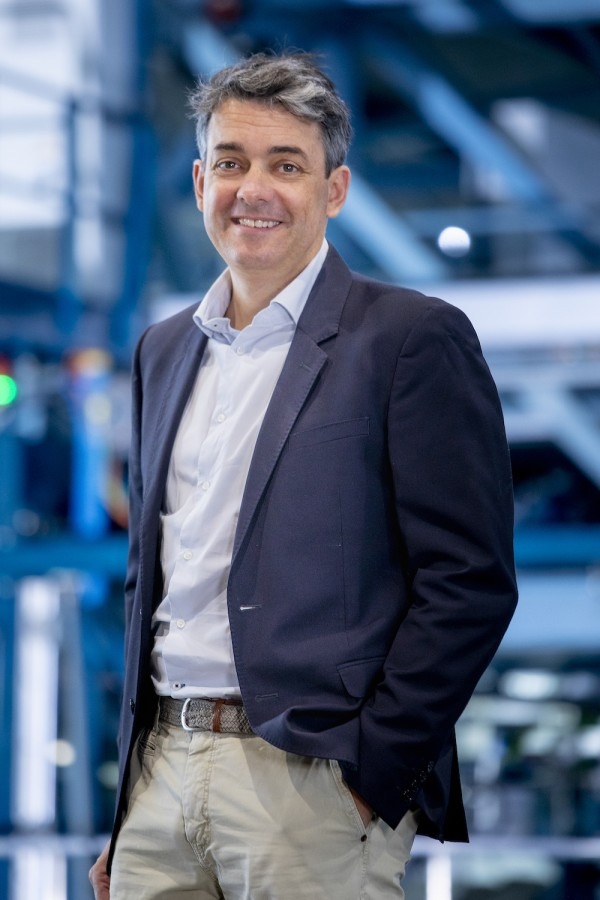
‘The integration of marine systems at the ship concept stage will be key’
Marine Systems represent a vast family of products and solutions, which are pretty difficult to characterise in just a few words. While a hull or a floater are the most obvious and prominent systems that a ship or platform is made of, many systems are integrated on such a hull or floater and contribute to the overall design and performance at sea.
Historically, the most important subsystem is the ship’s propeller. Each propeller has its own efficiency, characteristics and performance in open water. A series with specific features can be designed generically, as MARIN did in the 70s with the Wageningen B-series, or more recently as we did in cooperation with propeller manufacturers, yards and naval architects with the C, D and F-series. However, Guilhem Gaillarde, Manager of the Ships business unit and coordinating the Marine Systems market, points out that a careful selection needs to be done to make sure that the selected propeller will fit the actual hull with its appendages and operational profile. “When requirements in performance are very specific, propellers need to be tailor-made for a given operational condition and hull form.” This example illustrates exactly what can be expected from any subsystem that is fitted on a ship or floaters. Selecting standard, generic components will match 80% of the cases with 20% effort. To reach higher performance levels more customised solutions are required, which involves a greater effort in terms of concept and integration, he says.
Another example concerns alternative powering of ships, with the introduction of modern wind propulsion techniques that could lead to a drastic reduction of energy use. But their introduction needs to be carefully balanced with the propulsion train, especially regarding the propeller that will need to adapt to underloading conditions to keep working at a high efficiency level. New designs for hulls or added lifting appendages will also be needed. “Piling up marine systems without proper engineering does not sum up their performance. When their integration is well engineered at the concept stage, then it can be a win-win situation,” stresses Guilhem.
Actively controlled subsystems
The current development of control techniques and active devices allows the industry to develop increasingly complex, but more efficient subsystems. Such subsystems can further enhance the performance of a ship or an operation. “Today we can even realise operations that were not possible just a few years ago.” Motion control systems for example, have drastically evolved in the last two decades and many active solutions have been designed. In terms of passenger comfort, we have seen active stabiliser fins, underwater rotors and actively controlled anti-roll tanks flourishing on board yachts, he points out. Foils are again on the rise for passenger and crew transport. Motion compensation for crane or walking bridges has been boosted with the development of wind park installation and crew transfers to the offshore wind turbines. Identically, launch and recovery systems of small units for naval operations have seen a significant improvement over the last decade, improving both performance but also safety.
On top of interfacing different systems in one design, humans are also in the operational loop, being on board or onshore with possible autonomous operations. In any case, the enhancement of performance due to these increasingly sophisticated systems also needs to consider the interface with those controlling and deciding on the course of the operations. “This is one of the main drivers of our upcoming ‘Seven Ocean Simulator centre’: being able to identify and simulate complex operations integrating sophisticated subsystems to test, train, optimise and improve performance at sea.”
Guilhem comments: “You could simply say that while the hull hydrodynamics has improved over the last decades, possibly reaching its maximum performance thanks to numerical optimisation techniques, dynamic controlled subsystems allow a further extension of the performance and operational capabilities.” The complexity of modelling systems that are working simultaneously requires the most advanced time domain simulation techniques. Transient and non-linear phenomena, which are typical in operations where different subsystems work together, have also highlighted the interest, completeness and efficiency of experimental techniques. “But just like cooking, selecting all the best possible ingredients and mixing them together is not enough to obtain the best dish! The recipe is of prime importance and each ingredient needs to match the other to enhance and strengthen their flavour.”
System integration
This is the point where system integration comes into play, and this has an increasingly important role in the concept stage. “However, interfacing marine systems, which were selected based on their individual characteristics, often leads to disappointing performance. That’s why integration is a required step to ensure future performance.”
The current energy transition is giving birth to new types of energy carriers and power trains, that will combine with the likely strong development of wind propulsion. “Energy management and distribution will be key to ensure efficient and successful zero-emission operations. A plug-in for each separate subsystem brought into the design loop at a (too) late stage will not work. All those systems need to be integrated at an early conceptual stage to create a synergy from their own characteristics instead of possibly working against each other,” Guilhem emphasises.
Therefore, the role of system integration at the concept stage will be key. “It is not surprising that our largest JIPs at this moment are concerning marine systems and their integration with the hydrodynamic performance of the hull or floater to improve operations.”
MARIN, by means of its capabilities in time domain simulations, experimental dynamic control techniques and new simulator centre, will hopefully keep helping the sector as it integrates these increasingly sophisticated systems, which will ultimately enhance performance, safety and sustainability at sea.

